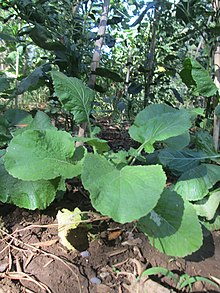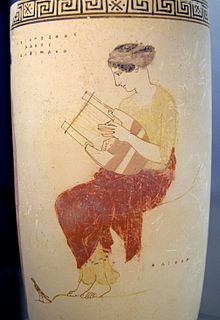
Brassicaceae or Cruciferae is a medium-sized and economically important family of flowering plants commonly known as the mustards, the crucifers, or the cabbage family. Most are herbaceous plants, some shrubs, with simple, although sometimes deeply incised, alternatingly set leaves without stipules or in leaf rosettes, with terminal inflorescences without bracts, containing flowers with four free sepals, four free alternating petals, two short and four longer free stamens, and a fruit with seeds in rows, divided by a thin wall.
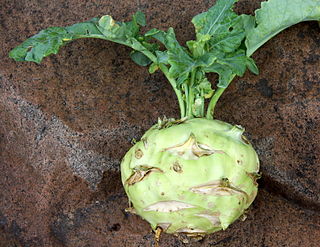
Kohlrabi, also called German turnip, is a biennial vegetable, a low, stout cultivar of wild cabbage. It is the same species as cabbage, broccoli, cauliflower, kale, Brussels sprouts, collard greens, Savoy cabbage, and gai lan.

The turnip or white turnip is a root vegetable commonly grown in temperate climates worldwide for its white, fleshy taproot. The word turnip is a compound of tur- as in turned/rounded on a lathe and neep, derived from Latin napus, the word for the plant. Small, tender varieties are grown for human consumption, while larger varieties are grown as feed for livestock. In the north of England, Scotland, Ireland, Cornwall and eastern Canada (Newfoundland), turnip often refers to rutabaga, a larger, yellow root vegetable in the same genus (Brassica) also known as swede.
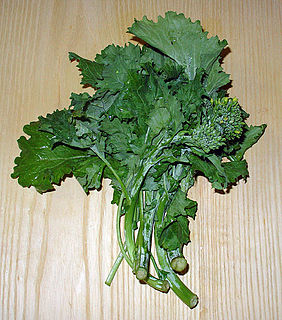
Rapini, commonly marketed in the United States as broccoli raab or broccoli rabe, is a green cruciferous vegetable. The edible parts are the leaves, buds, and stems. The buds somewhat resemble broccoli, but do not form a large head. Rapini is known for its slightly bitter taste, and is particularly associated with Italian, Galician, and Portuguese cuisines. Within the Italian tradition, the plant is associated especially with southern Italian cuisines such as those of Naples, Campania, and Apulia.

Bok choy, pak choi or pok choi is a type of Chinese cabbage. Chinensis varieties do not form heads and have green leaf blades with lighter bulbous bottoms instead, forming a cluster reminiscent of mustard greens. Chinensis varieties are popular in southern China and Southeast Asia. Being winter-hardy, they are increasingly grown in Northern Europe. This group was originally classified as its own species under the name Brassica chinensis by Linnaeus. They are a member of the family of Brassicaceae or Cruciferae, also commonly known as the mustards, the crucifers, or the cabbage family.

Choy sum is a leafy vegetable commonly used in Chinese cuisine. It is a member of the genus Brassica of the mustard family, Brassicaceae. Choy sum is a transliteration of the Cantonese name, which can be literally translated as "heart of the vegetable". It is also known as Chinese flowering cabbage.

Brassica oleracea is a plant species that includes many common foods as cultivars, including cabbage, broccoli, cauliflower, kale, Brussels sprouts, collard greens, savoy, kohlrabi, and gai lan.

Brassica juncea, commonly brown mustard, Chinese mustard, Indian mustard, leaf mustard, Oriental mustard and vegetable mustard, is a species of mustard plant. One subvariety is southern giant curled mustard, which resembles a headless cabbage such as kale, but with a distinct horseradish or mustard flavor. It is also known as green mustard cabbage.

In botany, a rosette is a circular arrangement of leaves or of structures resembling leaves.

Tatsoi is an Asian variety of Brassica rapa grown for greens. This plant has become popular in North American cuisine as well, and is now grown throughout the world.

Caulanthus is a genus of plants in the mustard family. Plants of this genus may be known as jewelflowers. They are also often referred to as wild cabbage, although this common name usually refers to wild variants of Brassica oleraceae, the cabbage plant. Jewelflowers are native to the southwestern United States and northern Mexico, where they are often found in warm, arid regions. Many species have an enlarged, erect stem rising from a basal rosette of leaves. Flowers arise directly from the surface of the stem; many species have colorful, bell-shaped flowers. The best-known of the fourteen species is probably the desert candle.

Sabal palmetto, also known as cabbage-palm, palmetto, cabbage palmetto, blue palmetto, Carolina palmetto, common palmetto, swamp cabbage and sabal palm, is one of 15 species of palmetto palm. It is native to the southernmost lowlands and coastal areas of the southern United States, as well as Cuba, the Turks and Caicos Islands, and the Bahamas.

Napa or nappa cabbage is a type of Chinese cabbage originating near the Beijing region of China, and is widely used in East Asian cuisine. Since the 20th century, it has also become a widespread crop in Europe, the Americas and Australia. In much of the world, this is the vegetable referred to as "Chinese cabbage". In Australia it is referred to as "wombok".

Crocidolomia pavonana is a moth of the family Crambidae. Its caterpillar is a crop pest and is known as the croci or the cabbage cluster caterpillar. This moth is found in Africa and Asia, its range extending from South Africa through India to the Pacific Ocean, including Australia. The wingspan is about 25 mm (1 in). The larvae feed on Brassicaceae species and are considered an agricultural pest on cabbages. At first, they feed only on the undersides of the leaves. Later they feed on the rest of the leaves and the central shoot. The species was first described by Johan Christian Fabricius in 1794.
Brassica elongata, the elongated mustard or long-stalked rape, is a species of the mustard plant that is native to parts of Central Europe, Eastern Europe, the Balkan Peninsula, the Caucasus, Morocco and parts of Central Asia. Through plant invasion this species has become naturalized in many other parts of the world. Some of these naturalized regions include South Africa, North Western Europe, Australia and North America. Given the wide range of climate and ecological conditions of these regions, B. elongata has been able to disrupt the ecosystems of their native plant habitats and has been label as an invasive species in many of its naturalized zones. In North America, this species is often found as a roadside weed in the southwestern states, particularly in the state of Nevada. Studies allude that the Cruciferae might have migrated through the Bering land bridge from what is now Central Asia. Commonly known as the long-stalked rape or as langtraubiger Kohl in German, this species is a close cousin to Brassica napus (rapeseed) and a secondary genetic relative to B. oleracea (kale). As a close genetic species of the rapeseed, the long-stalked rape has one of the highest counts of accumulated polyunsaturated linoleic and linolenic acid. Both compounds are heavily used to manufacture vegetable oils. Brassica elongata has the propagative potential of turning into a horticultural product from what is currently a noxious weed.
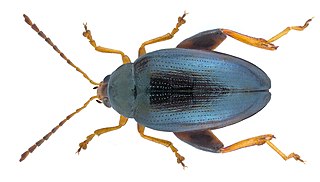
Psylliodes chrysocephala or Psylliodes chrysocephalus, commonly known as the cabbage-stem flea beetle, is a species of leaf beetle situated in the subfamily Galerucinae and the tribe Alticini.
